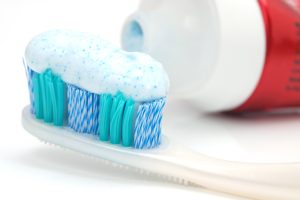When it Comes to Toothpaste
 Choosing the right toothpaste for yourself—or your family—goes beyond the coupon you may have in hand, or bright displays in the marketplace. For your health, you have to think like a dentist.
Choosing the right toothpaste for yourself—or your family—goes beyond the coupon you may have in hand, or bright displays in the marketplace. For your health, you have to think like a dentist.
At different times in our lives, dental strategies change, toothpaste requirements change. And product name isn’t half as important as the basic components of the paste. Key word: ingredients. Besides fluoride, which every adult should use in one form or another (less for children), consider the options:
Say you have sensitive teeth. Look for a toothpaste with strontium chloride or potassium nitrate. Such compounds block the microscopic tubes that lead to nerves within the tooth. And most people need to brush a month before they gain relief.
With sensitive teeth, what you don’t need is an abrasive toothpaste, that is, one with baking soda or whitening agents. You’ll aggravate the problem and, by the way, you’ll hurt yourself. Much better: if you’re after whiter teeth, seek cosmetic treatment from your dentist.
“Tartar control” is all the rage. Toothpastes that contain sodium pyrophosphate stick to the enamel above the gumline. Actually, they don’t remove a single germ that’s already there, but prevent new tartar from adhering to the teeth. Much better: get your teeth professionally cleaned at least twice a year.
Triclosan is The Ingredient in antimicrobial toothpaste. So far, it seems to disrupt the bacteria that cause gum disease, but don’t bank on it just yet. Much better: schedule periodontal testing.
Tailor your toothpaste to your own needs. And, no matter what manufacturers promise, regular dental care has to be part of the picture.



